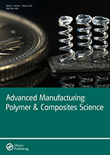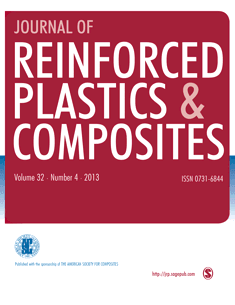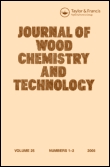
COMPOSITES PART A-APPLIED SCIENCE AND MANUFACTURING
Scope & Guideline
Innovating Manufacturing Through High-Impact Research
Introduction
Aims and Scopes
- Composite Material Development:
The journal publishes research on the development of new composite materials, including thermosetting, thermoplastic, and biocomposite systems, often with enhanced mechanical, thermal, and electrical properties. - Manufacturing Techniques:
It covers various manufacturing techniques for composites, such as additive manufacturing, resin transfer molding, and automated fiber placement, with a focus on process optimization and efficiency. - Interface Engineering:
Research on improving interfacial adhesion between fibers and matrices is a significant theme, aiming to enhance the mechanical properties and durability of composite materials. - Functionalization and Modification:
The journal features studies on the chemical and physical modification of fibers and matrices, including the incorporation of nanoparticles and other additives to achieve multifunctional properties. - Sustainability and Recycling:
There is a consistent focus on sustainability, including the use of recycled materials and the development of biodegradable composites, addressing environmental concerns in composite manufacturing. - Advanced Characterization Techniques:
The use of advanced characterization methods, including in-situ techniques and computational modeling, to analyze the mechanical behavior and failure mechanisms of composites is a vital area of research.
Trending and Emerging
- Smart and Multifunctional Composites:
There is a growing trend towards developing smart composites that incorporate sensors and actuators for real-time monitoring and adaptive functionalities. - Sustainability and Green Composites:
Research on sustainable materials and eco-friendly processes is on the rise, emphasizing the importance of reducing environmental impact through the use of biodegradable and recycled materials. - Nanocomposites and Hybrid Systems:
The integration of nanoparticles and hybrid materials to enhance performance characteristics, such as thermal conductivity and fire resistance, is gaining significant attention. - Advanced Characterization and Modeling Techniques:
Emerging computational methods, including machine learning and advanced imaging techniques, are increasingly being utilized to predict and understand the behavior of composites under various conditions. - 3D Printing and Additive Manufacturing:
The application of 3D printing technologies in the production of composites is rapidly evolving, focusing on the customization of materials and structures for specific applications. - Bio-Inspired and Nature-Based Composites:
Research exploring biomimicry and bio-inspired designs for enhanced performance and functionality in composites is emerging as a significant area of interest.
Declining or Waning
- Traditional Fiber Reinforcement:
Research focusing solely on traditional fiber-reinforced composites, such as glass and carbon fibers, is becoming less prominent as newer materials and hybrid systems gain attention. - Basic Mechanical Testing:
There is a noted decline in publications centered around basic mechanical testing of composites without innovative approaches or modifications, as the field moves towards more complex and application-oriented studies. - Conventional Manufacturing Processes:
Interest in conventional manufacturing processes, such as hand lay-up, is waning in favor of advanced techniques like 3D printing and automated processes, which offer greater precision and efficiency. - Single Material Studies:
Research focusing only on single-material composites without exploring hybrid or multifunctional aspects is becoming less common, as the demand for advanced materials grows. - Static Analysis:
There has been a shift away from static analysis towards dynamic and real-time monitoring approaches, reflecting a trend towards more sophisticated methods of understanding composite behavior.
Similar Journals

Advanced Manufacturing-Polymer & Composites Science
Transforming Research into Practical ApplicationsAdvanced Manufacturing-Polymer & Composites Science, published by Taylor & Francis Ltd, is a prominent open-access journal dedicated to the cutting-edge fields of polymer and composite materials in advanced manufacturing. With an ISSN of 2055-0340 and an E-ISSN of 2055-0359, this journal has been providing researchers, professionals, and students critical insights since its inception in 2015. The journal is characterized by its pivotal role in disseminating high-quality research that intersects with crucial areas such as Electrical and Electronic Engineering, Management of Technology and Innovation, and Polymers and Plastics, as indicated by its Q3 and Q2 rankings across these categories in 2023. In addition, it has established a significant presence in Scopus rankings, reflecting its contribution to the academic community with specific ranks in the top half of its fields. Recognizing the importance of open access, the journal fosters wider dissemination of knowledge, allowing global access to groundbreaking studies that influence both research and practical applications. Operating from the United Kingdom, Advanced Manufacturing-Polymer & Composites Science continues to pave the way for innovation and collaboration in the field, making it an essential resource for anyone involved in materials science and engineering.

INTERNATIONAL MATERIALS REVIEWS
Advancing Knowledge in Materials Chemistry and EngineeringINTERNATIONAL MATERIALS REVIEWS, published by SAGE Publications Inc, is a leading journal dedicated to the comprehensive analysis of contemporary research in the fields of materials chemistry, mechanical engineering, mechanics of materials, and the study of metals and alloys. With an impressive impact factor and a Q1 ranking across multiple categories such as Materials Chemistry and Mechanical Engineering in 2023, it ranks amongst the top journals for innovative materials research. The journal has a long-standing history since its inception in 1987 and continues to serve as a crucial resource for academics and professionals alike. Although it is not open access, it is renowned for its rigorous peer-review process and its commitment to disseminating high-quality materials science research globally. Researchers, students, and industry professionals benefit greatly from the journal's insightful reviews, both for the advancement of theoretical knowledge and practical applications within the fast-evolving materials field.

Revue des Composites et des Materiaux Avances-Journal of Composite and Advanced Materials
Pioneering Research in Composite and Advanced MaterialsRevue des Composites et des Materiaux Avances - Journal of Composite and Advanced Materials is a prominent academic journal published by the INT INFORMATION & ENGINEERING TECHNOLOGY ASSOC, based in France. With an ISSN of 1169-7954 and an E-ISSN of 1958-5799, this journal serves as a critical platform for the dissemination of innovative research in the field of composite and advanced materials. Currently categorized in the Q3 quartile of Materials Science and ranking 326 out of 463 in its category according to Scopus, the journal aims to bridge the gap between theoretical advancements and practical applications in material science. As it embraces an open-access model to increase accessibility, it caters to a diverse audience, including researchers, professionals, and students interested in cutting-edge materials technology. The journal covers a wide scope of topics ranging from manufacturing processes to material characterization, contributing significantly to the ongoing discourse in this evolving field. With convergence years extending from 2012 to 2024, it is poised to be an essential resource for anyone looking to stay abreast of the latest developments in composite science.

Additive Manufacturing
Advancing Innovations in Additive ManufacturingAdditive Manufacturing is a leading international journal published by ELSEVIER, dedicated to the advancements and transformative applications of additive manufacturing technologies across various disciplines. Since its inception in 2014, it has emerged as a pivotal resource in the fields of Biomedical Engineering, Industrial and Manufacturing Engineering, and Materials Science, with an impressive impact factor and ranking in the Q1 quartile across multiple categories as of 2023. The journal serves as a platform for cutting-edge research, state-of-the-art techniques, and novel applications in additive manufacturing, making it essential reading for researchers, industry professionals, and students alike. By fostering a comprehensive understanding of the challenges and innovations within the field, Additive Manufacturing plays a crucial role in shaping the future of production technologies. With a strong readership and rigorous peer-review process, this journal ensures that its contributions remain at the forefront of manufacturing research and development.

SAMPE JOURNAL
Advancing Engineering Excellence Through Rigorous ResearchSAMPE JOURNAL, published by SAMPE PUBLISHERS, has served as a pivotal source of knowledge and innovation in the field of engineering and materials science since its inception in 1969. This peer-reviewed journal is dedicated to advancing the science and application of materials and manufacturing processes, catering to the interests of researchers, professionals, and students alike. Although it does not currently offer open access options, its articles are renowned for their depth and rigor, contributing significantly to the ongoing discourse in Mechanical Engineering, General Materials Science, and Mechanics of Materials. With Scopus rankings placing it in the 38th percentile for Mechanical Engineering and 37th for General Materials Science, SAMPE JOURNAL continues to be an essential resource for those striving for excellence in their respective fields. For those invested in pioneering research and innovations, this journal remains a reliable and respected platform for publication and dissemination of knowledge.

FIBRE CHEMISTRY
Bridging Fundamental Science with Practical Fibre Applications.Fibre Chemistry is an esteemed journal published by Springer, focusing on the intricate and evolving field of polymer science and textile engineering. With its ISSN 0015-0541 and E-ISSN 1573-8493, this journal serves as a pivotal resource for researchers, practitioners, and students, highlighting significant advancements and innovations in fibre technology since its inception in 1969. Despite its current positioning in the Q3 quartile across Chemical Engineering, Chemistry, and Materials Science categories, Fibre Chemistry continually aims to bridge the gap between fundamental science and practical application by disseminating high-quality, peer-reviewed research articles. The journal does not currently operate under an open access model, but it provides crucial insights that foster collaboration and drive progress within its field. With the ongoing convergence of technologies and materials, this publication is poised to contribute significantly to the academic discourse surrounding fibre chemistry and its related disciplines until 2024 and beyond.

JOURNAL OF THERMOPLASTIC COMPOSITE MATERIALS
Innovating Materials Science Through Composite ResearchJOURNAL OF THERMOPLASTIC COMPOSITE MATERIALS, published by SAGE PUBLICATIONS LTD, is a cutting-edge journal dedicated to advancing the field of thermoplastic composites and their applications within ceramics and condensed matter physics. With an ISSN of 0892-7057 and an E-ISSN of 1530-7980, the journal boasts a strong academic reputation evidenced by its impressive impact factor as well as its classification in the 2023 Q2 category for both Ceramics and Composites and Condensed Matter Physics. Ranked #60 in Condensed Matter Physics and #26 in Materials Science by Scopus, the journal plays a pivotal role in disseminating innovative research findings, trends, and advancements to a global audience. Spanning research from 1988 to 2024, it serves as an essential resource for researchers, professionals, and students alike, fostering collaboration and promoting knowledge in the ever-evolving landscape of thermoplastic composite materials. Although currently not open access, the comprehensive content and critical insights provided by this journal are invaluable for those engaged in cutting-edge research and practical applications in these fields.

JOURNAL OF REINFORCED PLASTICS AND COMPOSITES
Exploring the Intersection of Engineering and SustainabilityWelcome to the JOURNAL OF REINFORCED PLASTICS AND COMPOSITES, a leading publication in the realms of materials science, engineering, and polymers. Published by SAGE Publications Ltd, this journal stands out with its robust Q2 ranking in multiple categories, including Ceramics and Composites, Materials Chemistry, Mechanical Engineering, and Mechanics of Materials. Since its inception in 1982, the journal has become an essential resource for researchers and professionals, disseminating pioneering research and innovative applications in reinforced plastics and composite materials. Though not open access, subscribers gain exclusive insights into groundbreaking findings contributing to the advancement of the industry. The journal is indexed in Scopus, with notable rankings that reflect its influence and high-quality scholarship. With ongoing coverage until 2024, the JOURNAL OF REINFORCED PLASTICS AND COMPOSITES remains committed to fostering academic dialogues and facilitating advancements in sustainable materials and advanced engineering solutions.

JOURNAL OF COMPOSITE MATERIALS
Driving Excellence in Composite Materials ResearchJOURNAL OF COMPOSITE MATERIALS, published by SAGE PUBLICATIONS LTD, is a premier academic journal dedicated to advancing the field of composite materials. With a long-standing history since 1967, this journal serves as a vital platform for researchers and professionals in the areas of ceramics and composites, materials chemistry, mechanical engineering, and mechanics of materials. The journal's impact is further underscored by its Q2 quartile ranking in various categories as of 2023, alongside notable Scopus rankings in multiple engineering and material science disciplines. Though it currently lacks Open Access options, its rigorous peer-review process ensures the high quality and relevance of its published research. This journal is instrumental in fostering innovation and promoting collaboration among academics and industry professionals, making it essential reading for anyone involved in materials science and engineering.

JOURNAL OF WOOD CHEMISTRY AND TECHNOLOGY
Championing Research for a Sustainable Future in Wood TechnologyJournal of Wood Chemistry and Technology, published by Taylor & Francis Inc, is a premier academic platform dedicated to advancing the fields of wood chemistry and technology since its inception in 1981. With an impressive converged publication run extending through 2024, this journal addresses pivotal research in chemical engineering and materials science, achieving a current categorization in Q2 for both Chemical Engineering and Chemistry, alongside a Q3 ranking in Materials Science. As evidenced by its Scopus rankings, it occupies a respectable position within the academic community, fostering discussions that bridge theoretical innovation and practical applications relevant to the industry. While access is not open, the journal remains an essential resource for researchers, professionals, and students eager to explore the complexities of wood chemistry, enhancing their understanding and contributing to sustainable practices in materials development.